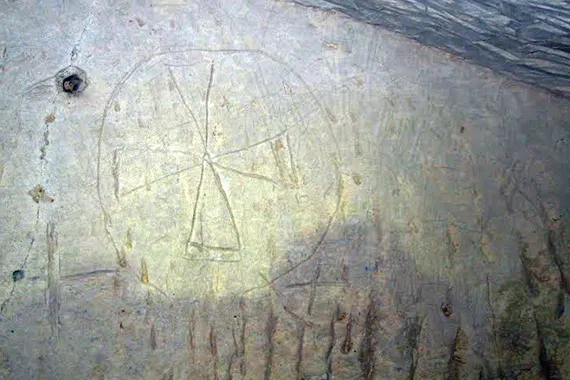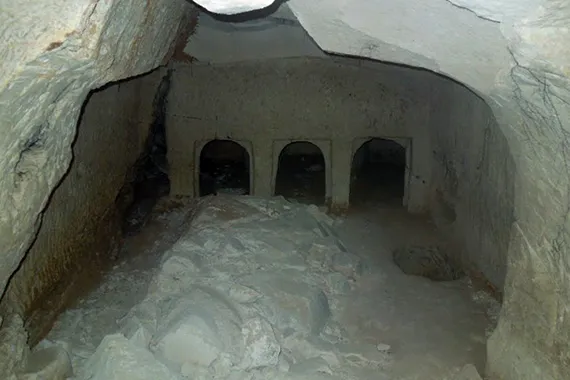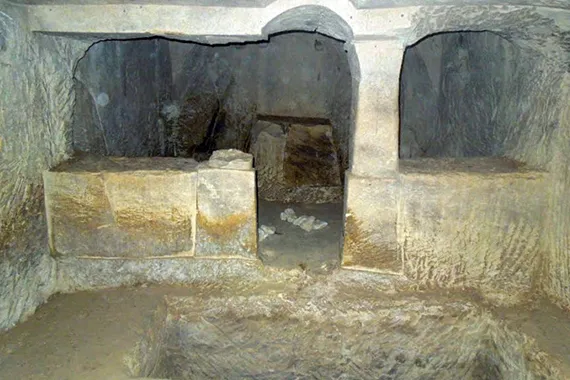
Salome Tomb
Beit Lehi Foundation, with its team of archaeologists under the direction of Dr. Oren Gutfeld and the Israel Antiquities Authority announced the discovery of the Tomb of Salome, and most likely the tomb of the Zebedee Family at Beit Lehi, the largest lost city ever discovered in Israel.
With more than fifty-five inscriptions and the name, “Holy Salome” engraved in adjacent structures at the site, there is little doubt that the tomb is that of Salome. Some of the inscriptions have been translated into English:
Holy Salome, have mercy on Zacaraias the son of Cyrillus, Amen
Holy Salome
Jesus Christ
Abas Agapius the sinner Deacon of the Church of Holy Salome
Temple of Holy Salome
In the New Testament Salome is known to be the mother of James and John, two of the Apostles of Jesus. Salome is often identified as the wife of Zebedee, who is thought to have been a fisherman, along with his sons James and John, and a man of some means or wealth.
Salome’s name appears frequently in apocryphal writings. Most scholars today believe Salome was either the sister or cousin of Mary, mother of Jesus of Nazareth. If the former, James and John were first cousins of Jesus. The apocryphal Gospel of James, also known as The Protoevangelium of James, identifies Salome as the midwife who was to be present at the birth of Jesus. Salome arrived late for the birth though it is believed she later assisted Mary with the Holy Child.
By the Middle Ages, Salome became identified as “Mary Salome, the believing midwife.” Salome’s marriage to Zebedee would have come after the birth of Jesus, and they became the parents of future apostles James and John.
Mark 15:40-41 mentions several Galilean women being at the Crucifixion of Jesus, Salome among them. She later joined in bringing spices for anointing Jesus’s body (Mark 16:1). Salome also appears in apocryphal writings as a committed disciple of Jesus. She attended the crucifixion and would be among the three women, or “Three Marys,” who would witness the empty tomb on Resurrection morning and hear the angels declare, “He is risen.” Therefore, it is important to note the significant role Salome played as a witness of Jesus’s divinity.
Non-Christian writers in the 2nd century were aware of teachings passed down from “Salome the disciple.” Celsus, a 2nd century Greek, wrote a discourse attacking Christian sects as a threat to the Roman state, specifically Harpocratian Christians who traced themselves to Salome.
The tomb itself has been dated to the 1st Century B.C. However, attached to the tomb are structures, apparently places of worship, dating from the 4th and 7th centuries. A large well-constructed courtyard has been discovered at the entrance to the tomb. Artifacts included stone carvings, a large mosaic floor and dozens of oil lamps. The presumption is that pilgrims would rent oil lamps to enter the cave for prayers.
Need a Video
Video Transcript
blaVirtual Tour
The virtual tour for this location works on your computer web browser as well as a tablet or a phone. Best of all, it works on your headset. For instructions using an Oculus Quest, please see our virtual visit page.
Image Gallery




